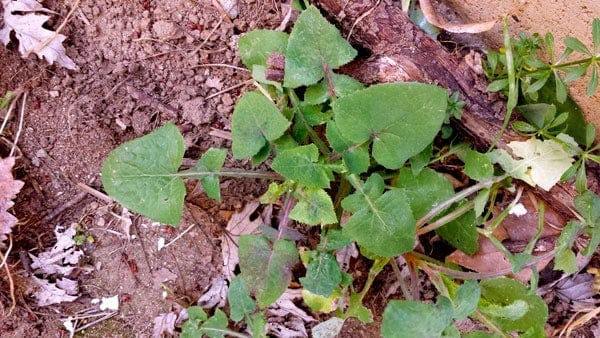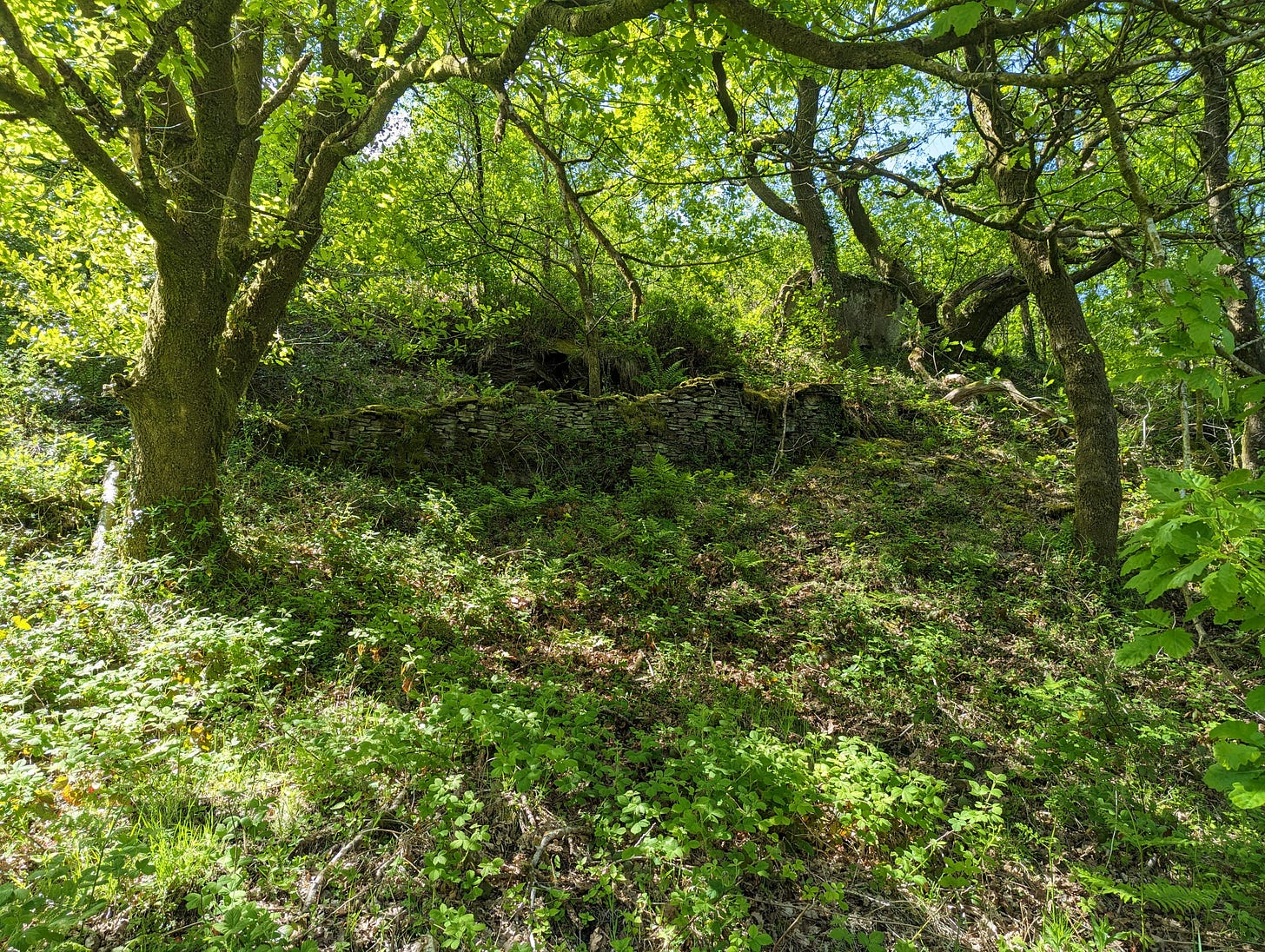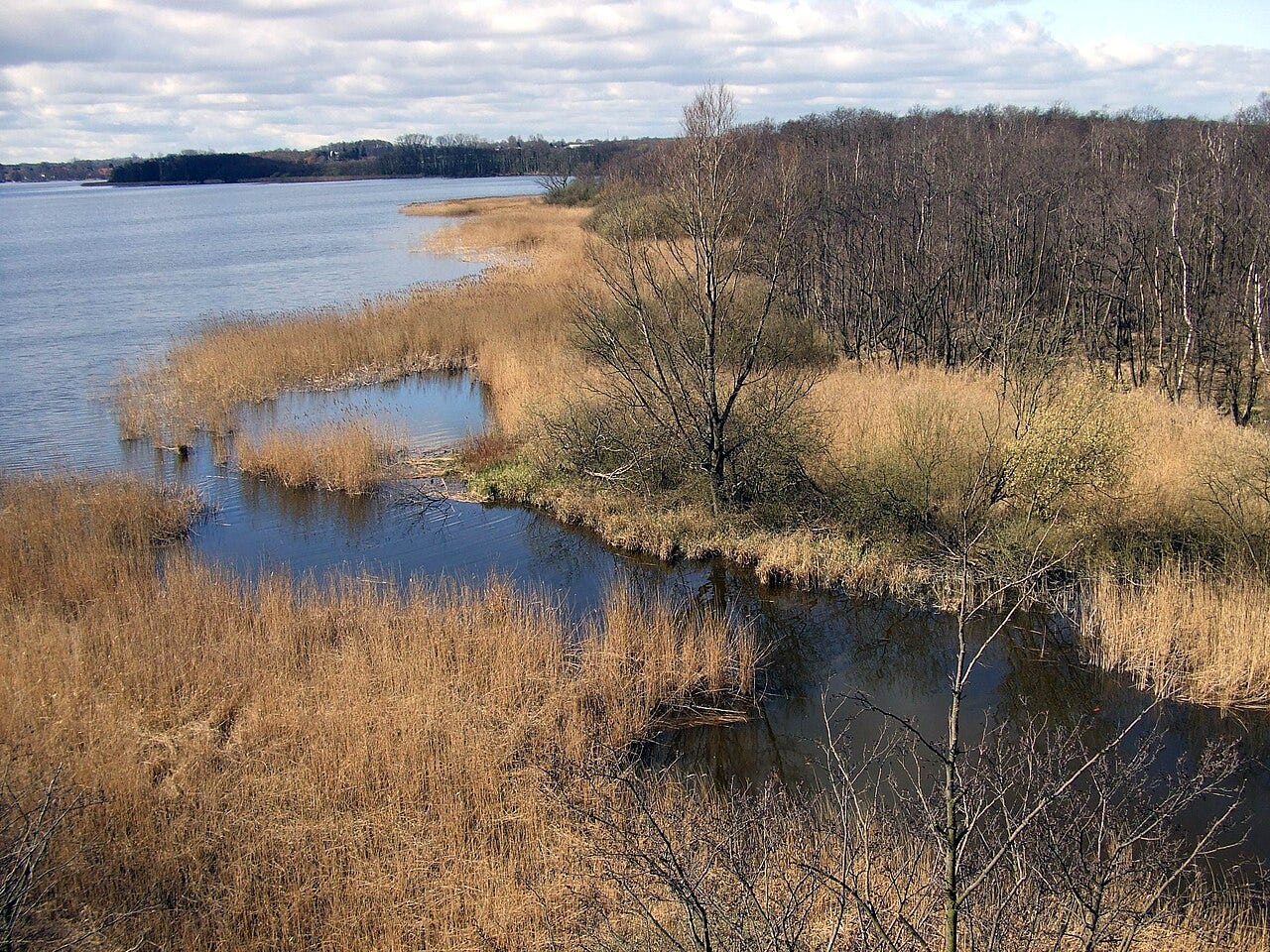Last week, I stepped outside just as the sun slipped behind the treetops at the back of our property. A clear line divides the mowed lawn from our half acre of woods—but in that hour, the line softened. The lawn fell into shadow, and the woods began to glow.
It’s not quite one place or the other.
Just before the woods there’s a narrow strip of tangled green —a place we never trim too neatly. Goldenrod, violets and daylilies-gone-wild lean into burdock. Behind them, maples and oaks rise. I’ve passed this line a hundred times, usually with a to-do list in head. But this time, something pulled me in.
I remembered something I’d read recently in Homestead Living, a lovely, in-depth magazine about living on and from the land. The article was by chef and wild foods forager Sam Thayer:
“Look for the disturbance. Look for the boundary. Look for where two areas meet. That’s where the life is. That’s where the nourishment is.
I looked more closely. Low to the ground, chickweed was spreading below the goosefoot. A stand of wood nettle at the base of a rotting log. All of it edible. All of it growing—not in the lawn and not deep in the woods—but right in between.
The Edge Is Where Life Rushes In
We tend to overlook boundaries. They’re messy. They blur categories. They don’t photograph well. But in nature, the edge is where abundance begins.
Scientists call these transition zones ecotones—places where two plant communities meet and begin to mingle. It might be the soft blur between field and forest, the brackish blend of freshwater and salt, the edge of a meadow slowly giving way to trees. Sometimes the boundary is wide and gradual, other times it’s abrupt—like the clear line between our lawn and the woods. But in every case, the ecotone is alive with possibility. Species from both worlds grow together creating a richness you won’t find in either place alone. It's where things touch and tangle, places are teeming with life. It’s where deer bed down, bees hum, and the mushrooms fruit.
And it’s not just true for nature.
I wonder—how many of us are living in an ecotone of the soul?
A transition between what was and what’s not yet?
The places in our lives that feel overgrown or under-attended—the postpartum year, the in-between job, the long waiting, the relocation, the shift in relationship—those are the very places we tend to want to clean up, move on from, or trim back.
But what if, like the backyard woods-line, these are places of unlooked-for abundance?
What if our own growth is richest where things seem a little wild?

Disturbance Is Not Destruction
I kept thinking about Thayer’s words: “Look for the disturbance.” It’s a forager’s principle. Disturbed land—old construction sites, roadsides, logged forests—is where edible plants thrive. Dandelions, burdock, plantain, lamb’s quarters. They show up after disruption.
It makes me wonder: What if the disordered parts of our lives—the health crisis, the fractured friendship, the dashed plan—are not just wounds to get over but places where new provision is already sprouting?
In a culture that prizes perfection and polish, this is hard to see. But God often works in these very places. Scripture is full of disturbed ground where life takes root. A burning bush in the wilderness. A manger in a stable. A tomb in a garden.
The edge is holy ground.
Award-wining poet, Theodore Roethke, evokes exactly that edge between cultivated field and wildness in his longer poem “The Far Field.” In Part II, he writes:
“At the field’s end, in the corner missed by the mower,
Where the turf drops off into a grass‑hidden culvert,
Haunt of the cat‑bird, nesting‑place of the field‑mouse…”
Roethke describes the small uncultivated margin that regular mowing misses—a literal ecotone, a meeting of turf, weeds, wildflowers, and wildlife. That unmowed strip becomes a place of revelation to Roethke:
“One learned of the eternal…”
His poem suggests that in the edges—the places left untrimmed or overlooked—life quietly gathers, and the deeper truths emerge.
Our Backyard, Our Planet, Our Calling
Here’s the astonishing part. When we tend the edge—when we stop mowing every inch, when we protect boundaries and restore habitats—we do more than steward our land. We join creation in its renewal.
And when we tend the edges in our lives—when we sit with the uncomfortable transition, when we listen instead of rush, when we accept the blur of seasons—we become more whole.
We begin to see.
We begin to taste what we had overlooked.
This is where God meets us: not always in the tidy center, but in the uncertain place between.
Try This
Step outside and find the edge—where one thing becomes another. Where grass gives way to brush, where stones meet soil, where order yields to the untamed. What grows there?
Consider a boundary in your life right now. Something unsettled, transitioning, or not yet clear. Ask: What might be growing here that I haven’t noticed? What provision might be quietly taking root?
Further Reading & Wondering
The Forager’s Harvest by Sam Thayer
The Forager Chef’s Book of Flora by Alan Bergo
More on Ecotones: Borderlands of Wonder
Where Have You Found Beauty in the Margins?
Tell us about it. Your sharing helps us all see more clearly.
Blessings abounding,
Sheila Carroll
Living Books Press
P.S. If you’re a homeschooling parent standing at the edge of a new season, this short video course is a gentle guide. It will help you pause, listen, and shape the year ahead with vision and grace. Begin the journey here:
👉 Planning Your Homeschool Year with Grace




Thank you Sheila! Beautiful post!
Here in Virginia, a bird very commonly heard and seen at the boundaries is the indigo bunting.